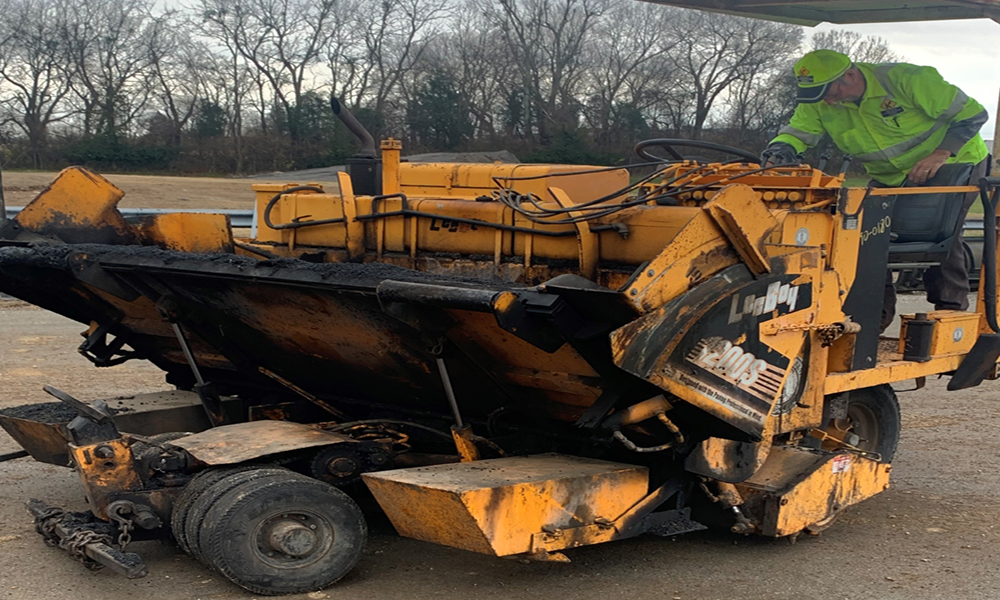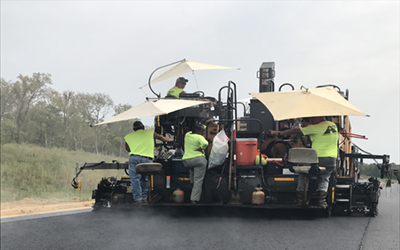Search for articles or browse our knowledge portal by topic.
Asphalt Maintainers and Pavers
Asphalt maintainers are typically used for road maintenance (potholes, shoulders, profiling, etc.), while asphalt pavers are more robust equipment for surface paving. The asphalt is added from a dump truck or a material transfer vehicle (MTV) into the paver’s hopper. The hopper is used as a temporary storage area for Hot Mix Asphalt (HMA) delivered by the transport vehicle. The conveyor then carries the asphalt from the hopper to the auger. The auger receives HMA from the conveyor and spreads it out evenly over the width to be paved. The paver should proceed at a constant speed and have a consistent stockpile of material in front of the screed to provide a smooth surface. The screed takes the head of HMA from the material delivery system, strikes it off at the correct thickness, and offers initial mat compaction.
There are two types of asphalt paver:
Track asphalt pavers: Track-equipped asphalt pavers offer superior traction for jobs that require wide pulls or large mix-delivery vehicles. To see examples of Track Asphalt pavers click on this link.
Wheel asphalt pavers: Wheel-equipped asphalt pavers offer excellent Jobsite mobility for applications that require a lot of paver movement and relocation. To see examples of Wheel Asphalt Pavers click on this link.
Screeds: Asphalt screeds feature hydraulic variable-width adjustment and electrically heated screed plates. They are available in rear-extender and front-extender models.
-
-
- Before beginning work with the asphalt paver, conduct a daily or walk-around inspection. This inspection should be done before starting the engine to identify potential problems that could lead to breakdowns.
- Always follow operating guidelines, pay attention to all instruments and controls, and keep a constant watch for people and hazards around the equipment.
- Mount the equipment using three points of contact, get organized in the operator’s cab and become familiar with all the instruments and controls’ layout and purpose.
- Warning safety notes and Danger safety notes must be followed.
-
Heavy Equipment Knowledge Book:
Access the complete Knowledge Book here: Heavy Equipment Knowledge Book
Next Article: Backhoes




